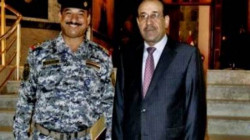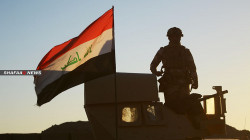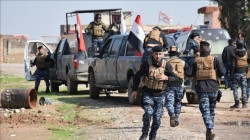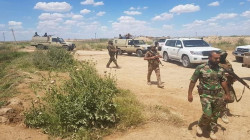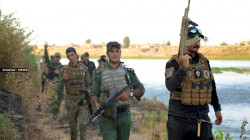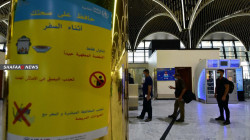Mosul removes war’s debris and illuminates hope’s lights
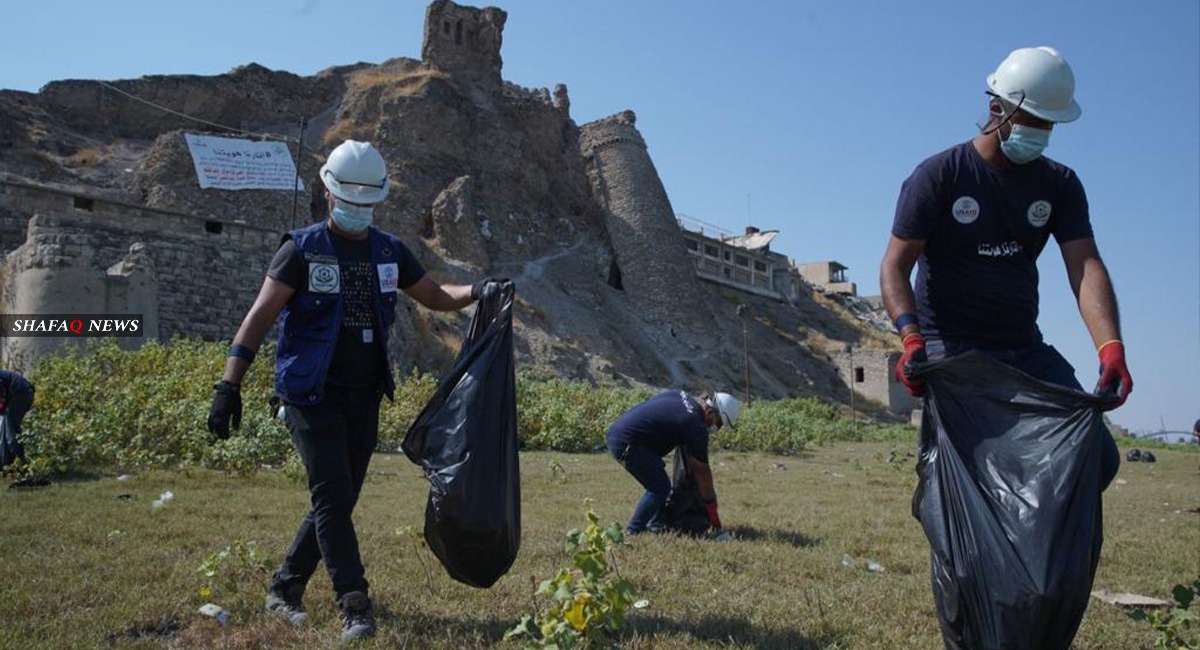
Shafaq News/ "The journey of a thousand mile begins with a step", this concept is well realized by Mohammed Essam and his companions to take their first step on a hard long journey to remove the war dust and rubble from the monuments and civilization in Mosul, hoping to restore it to the glorious way it once was.
Essam -young men-has set up a volunteer team called "Mosul’s Forearms" to clean up the city's archaeological and heritage sites and remove the rubble and remnants of war around it.
They also volunteered to re-light these monuments at night -to remind residents and others that the city has survived all the disasters and calamities throughout history, and its monuments remained proud and majestic -despite isis's attempt to erase its traces.
"We did not accept the description of Mosul as a city of destruction and nothing else”, Essam said to Shafaq News agency when asked about the goal of the voluntary campaign.
"Our children do not know their city’s great legacy, and this is very dangerous, we desperately need to inform future generations of the remains of our historical monuments -especially after the destruction of dozens of archaeological sites during terrorism’s control", said Essam recounting the most important reason behind the voluntary campaign.
"Our monuments are our identity”..This was the motto of the campaign launched by the volunteer team. The campaign first started selecting the most important landmarks closest to the public eye to clean up its surroundings and install lampposts around it.
The team began work on "Bashtabya Castle" and "Kara Saray". The two sites were the first monuments to be illuminated.
So far, the campaign has included seven sites, including the Mar Thoma Church, "A special concern and a message of pride for Christians”, the group's founder said.
"The first phase will be only inside Mosul -to highlight these monuments locally and internationally; the second phase we have not planned yet, but we aspire to much more”, said Essam.
Dredging of archaeological sites.. ISIS overran Mosul in the summer of 2014 and took control overnight; after the Iraqi army collapsed and tens of thousands of soldiers fled the city.
ISIS then expanded within a few days to control a third of Iraq's territory in the north and west of the country.
ISIS then launched an organized campaign to destroy historical monuments in areas under its control -particularly in Nineveh, as ISIS militants bulldozed and destroyed the contents of Mosul’s Museum and the ancient cities of Nimrod, Hatra, Khorsabad, Nineveh, as well as the Islamic city of Eski Mosul.
ISIS also destroyed more than 119 historical mosques -according to official statistics from the Sunni Endowment Office, including the Al-Nuri Mosque and its minaret alongside the Mosque of Prophet Yunus. The destruction of the two sites had a significant impact on Mosul's residents.
ISIS’s shovels and bulldozers have destroyed dozens of Christian churches and Yazidi temples in Mosul -in addition to the three Assyrian archaeological gates, large parts of Nineveh’s Archaeological Wall, and winged bulls (Lamassu).
Although German and Italian missions are currently working on archaeological excavations -and the German discovery of four new winged bulls beneath the Prophet Yunus’s Hill, and the Italians discovery of an Assyrian palace in the eastern city of Nineveh, the archaeological identity of Nineveh will take years to reconstruct.
ISIS promoted these sites and monuments as "pagan", yet it smuggled small and precious items and sold them on the black market.
"The Will to Live"..Just as flower buds find their way through the rubble of war to touch the sun, volunteers have not despaired of continuing their campaigns -despite the lack of governmental support.
45 young people participated in the campaign, while the role of government sectors such as antiquities, municipalities, and electricity was shy and limited –as described by Essam.
However, the determination was the fuel for these volunteers to achieve what they have achieved despite the simple possibilities they have.. The results of their campaign received positive reactions on social media platforms, as well as praise from all regions of Iraq.
"This was the main purpose of the campaign. Mosul has monuments dating back to the Assyrian period and cannot remain neglected", Essam said.
This was not Essam and his companions’ first campaign..There have been successive campaigns to remove the effects and repercussions of the war in Mosul. "Our previous campaigns have been in the relief field as well as various volunteer work, such as the reconstruction of war-damaged houses and the removal of debris as well", Essam added.
Iraqi forces -backed by the international coalition, recaptured Mosul in 2017 after 10 months of a grinding war that turned large parts of the city -particularly the Old City, into rubble.
The rubble of war remains scattered in large parts of the city to date.
"We don't want to lose what's left due to negligence. A lamppost, a metal wire, and a lamp were enough to illuminate the historical monuments and give hope to the city's residents”, Essam said.
However, the reconstruction and restoration of the city need much more.
Essam said that government interest in archaeological sites will make them the focus of widespread attention, and will resonate positively with the city's residents and visitors.
"Without our history, we have no identity.. we have to do more so we don't see a day of Mosul being just a city of destruction. We have lost enough monuments because of terrorism and we will not lose what is left because of negligence”, Essam concluded.
